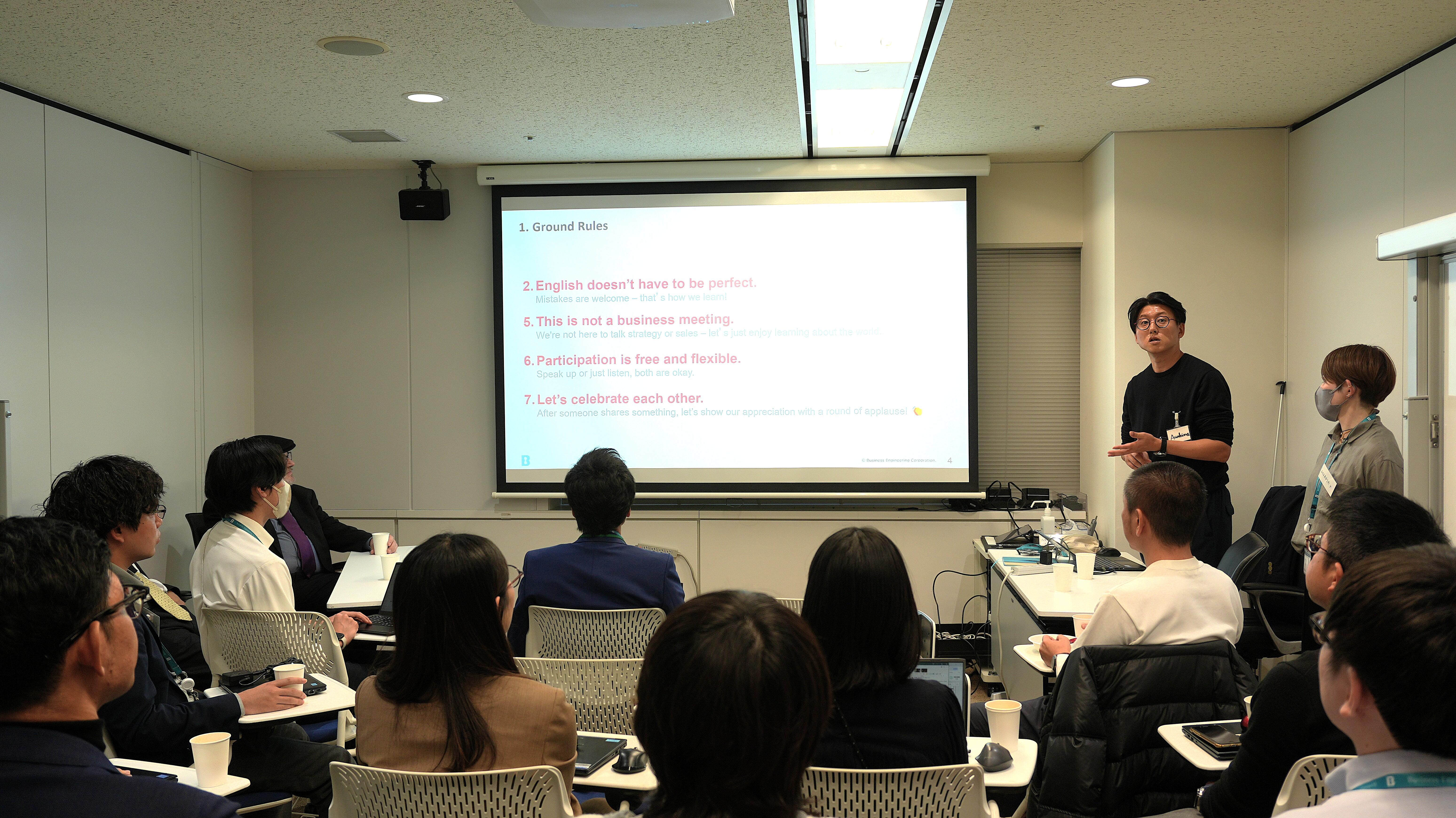Speaker: Business Engineering Corporation
Solution Business Headquarters
Digital Business Headquarters Data Management Department
Senior Architect
Yoshihiro Kato

By continually maintaining and further evolving the ability to utilize business-critical data in an organized and strategic manner, the value of that data can be maximized.
A specialized organization that provides total services from planning, conception, and formulation of the data infrastructure that is the foundation of this initiative, to architecture design, system construction, and subsequent master operation management and system development, was launched at B-EN-G in 2014. Yoshihiro Kato, one of the founding members, has led one difficult project after another, which could be described as "full of firsts," and has won the tremendous trust of clients.
Three skills lead to becoming a founding member of a data management specialist organization
In the days when there was a system for each business and we were limited to managing and using data that was closed to that system, "data management" did not receive as much attention as it does now. However, now that everyone is familiar with the development of information technology and has high expectations for its potential uses, what is required from management is a system that can utilize data for cross-organizational initiatives.
Data that matches the purpose is collected from data sources, classified, combined, and displayed. It is also necessary to check the quality of the data to be collected and ensure consistency between data that has the same attribute name but different meanings. The data infrastructure that will handle this needs to be structured optimally in light of the purpose of use and implemented while taking into account the characteristics of each IT tool.
Because data infrastructure plays such a wide range of roles, there is no textbook formula that will be the "right answer" for any company. It varies greatly depending on the business characteristics, the systems in operation, the range and scale of users, the approach to data governance, and future business goals. Therefore, consultants and architects who support the introduction and construction of the optimal data infrastructure for each company and lead them to the desired data utilization are required to have a wide range of business knowledge and deep knowledge of technology.
That was the reason why B-EN-G needed Yoshihiro Kato when they launched a specialized data management organization. Kato majored in information engineering at university, and after graduating gained experience as a systems engineer at a telecommunications carrier-related IT company and a user-related SI vendor before moving to B-EN-G. Since joining the company, he has been involved in a wide range of projects.
"While mainly dealing with accounting modules for Oracle's ERP, I have also worked as an ERP implementation consultant and development leader, and have been involved in a wide range of projects, including supporting the creation of data analysis environments using BI tools and business process management-based business reforms," Kato recalls. This experience and track record were what led to the company's success.
To promote data management, one needs "business knowledge" to understand the client's issues and consult on solutions, "engineering ability" to be familiar with the structure of various systems and be able to implement them, and "data utilization ability" to lead data visualization and analysis that leads to business decision-making and actions. Kato, who possesses these three qualities and experience, will boldly tackle various projects as a pioneer in data management.
The days of struggle with the theme of "firsts"
For Kato, who transferred to a specialized data management organization, the days that followed were a series of ups and downs. "One after another, I was given unreasonable requests," he says with a laugh.
The first project they were involved in was the conceptualization and design of a data model for a department store. B-EN-G is more specialized in systems for the B2B area, so it is no exaggeration to say that this was their first time providing full-scale data model design support for the B2C area.
Initially, this client was considering what the ideal data model should be to realize a one-stop view of customer information, known as Customer 360, but they were unable to judge whether this would be successful or not. They tried to refer to other companies' data models, but their business and internal situation were different, so they gave up on reusing them and started over from the beginning, redefining the data model. Kato worked with the client and seriously confronted the data every day.
"At first I was a bit confused because it was different from the many B to B projects I had been involved in up until then, but perhaps it was also a good thing that I was able to look at it from an objective perspective. Who exactly does the client mean when they talk about their 'customers'? For example, are all people who visit the store customers, or are people who purchase products customers? Are all people who have simply registered as members on the e-commerce site customers? If grandparents buy a school bag for their grandchild, which one should be considered a customer? Furthermore, how do they want to manage the information of inbound purchasers? By directly asking these questions, we were able to clarify the definitions of the various elements one by one, and we were able to formulate a data model that was acceptable to all involved parties." (Kato)
Subsequent projects also involved him wrestling with themes that were all "firsts," such as developing a data management scenario for an IT company that sells smartphone accessories on an e-commerce site, and investigating and analyzing data quality at a precision machinery company.
Building a large-scale data infrastructure for the logistics and manufacturing industries

Since 2020, Kato has been leading the requirements definition and design of large-scale data infrastructure in the logistics and manufacturing industries, almost in parallel.
First, the logistics industry project involves building a data infrastructure centered on data warehouses and BI, and continuously supporting the realization of various data utilization services that utilize that data infrastructure. Specifically, in addition to developing a dashboard to grasp and analyze warehouse inbound and outbound shipments and inventory status, the company will work with the client to jointly develop a service to visualize CO2 emissions during truck transport, and promote the utilization of that data.
A major challenge was that these data platforms and services were not simply intended for in-house use, but were intended to be widely offered to shippers or new customers who were not existing shippers.
"We will be running services for multiple clients simultaneously, and we expect that the number of target clients will continue to grow, into the hundreds, so we had to come up with a system that would enable efficient expansion. We needed to address points that would not be given much importance with a data infrastructure that was closed off within the company, such as making the internal structure as generalizable as possible to make it easy to expand to other clients, and automating the deployment process when expanding." (Kato)
On the other hand, for a manufacturing project, we participated in a project to establish three foundations - master data management, data integration, and data analysis - in order to create new customer value and achieve business results. The project aimed to create an environment where anyone could freely visualize, analyze, and make predictions using data from business systems, equipment data from production facilities, log data generated by products, and other data such as customer feedback.
"With the use of data in self-service BI in mind, we needed a system that would allow users to manage the authority of the scope of data they could access and to determine the content of the data themselves. We solved this problem by separating the data warehouse and data mart into an administrator access layer and a staff access layer, introducing a data governance tool into the data infrastructure, and implementing a data catalog that allows users to find the data they need for analysis and a data marketplace system where they can apply to use it," says Kato.
It should be noted that the two cases introduced here, one in the logistics industry and the other in the manufacturing industry, have very different approaches to data infrastructure architecture. The logistics industry's data infrastructure, which aims to provide a wide range of services, including to external parties, places emphasis on the freshness and convenience of the data made public, and although the data infrastructure had previously been divided into three tiers - data lake, data warehouse, and data mart - the data lake and data warehouse were integrated into one. In contrast, the manufacturing industry's data infrastructure, which places emphasis on governance of data access, aims for stricter tier separation and takes a completely opposite approach.
"The architecture of a data infrastructure will vary greatly depending on what you ultimately want to visualize and how. It is important to clarify the purpose and concept at the planning, conception and formulation stages and share it throughout the entire project. It is also necessary to consider the optimal data infrastructure for each company, without getting tied down to a specific architecture," Kato emphasizes.
Further enhancing our capabilities and pursuing optimal solutions for data infrastructure

Now the longest-serving member of the data management specialist organization, Kato is also involved in training the new young members, thereby contributing to strengthening the organization. At the same time, as a member of DAMA (Data Management Association Japan), he is actively involved in outside activities. Since he transferred to the specialist organization, his activities as a DAMA member have been carried out in a personal capacity, and are purely volunteer work, so to speak. However, Kato says, "The stimulation I get from interacting with members from various industries and data experts is very great, and I share new realizations and knowledge from time to time."
As mentioned above, the optimal data infrastructure differs for each company, but as the infrastructure changes significantly over time, it is essential to constantly keep a close eye on the latest trends.
"Considerations about data infrastructure are not limited to building databases and data integration. It is necessary to think about what data to use, how to analyze and visualize it, and how to use the data as a whole. In that sense, it is necessary to have not only technical knowledge, but also a wide range of knowledge, such as an understanding of the value that the data itself brings and the business, in other words, the pros and cons of what should be visualized from a business perspective," says Kato, who plans to continue honing his skills as a senior architect through various opportunities in the future and to continue pursuing the data infrastructure that companies truly need. And his desire for pursuit knows no bounds.








